Microsoft Fabric and How to Enable and Access Microsoft Fabric
Learn what Microsoft Fabric is, its services, and how to access it in this informative article. In today's data-driven landscape, Microsoft Fabric emerges as a comprehensive solution, streamlining data analytics for both experts and beginners.
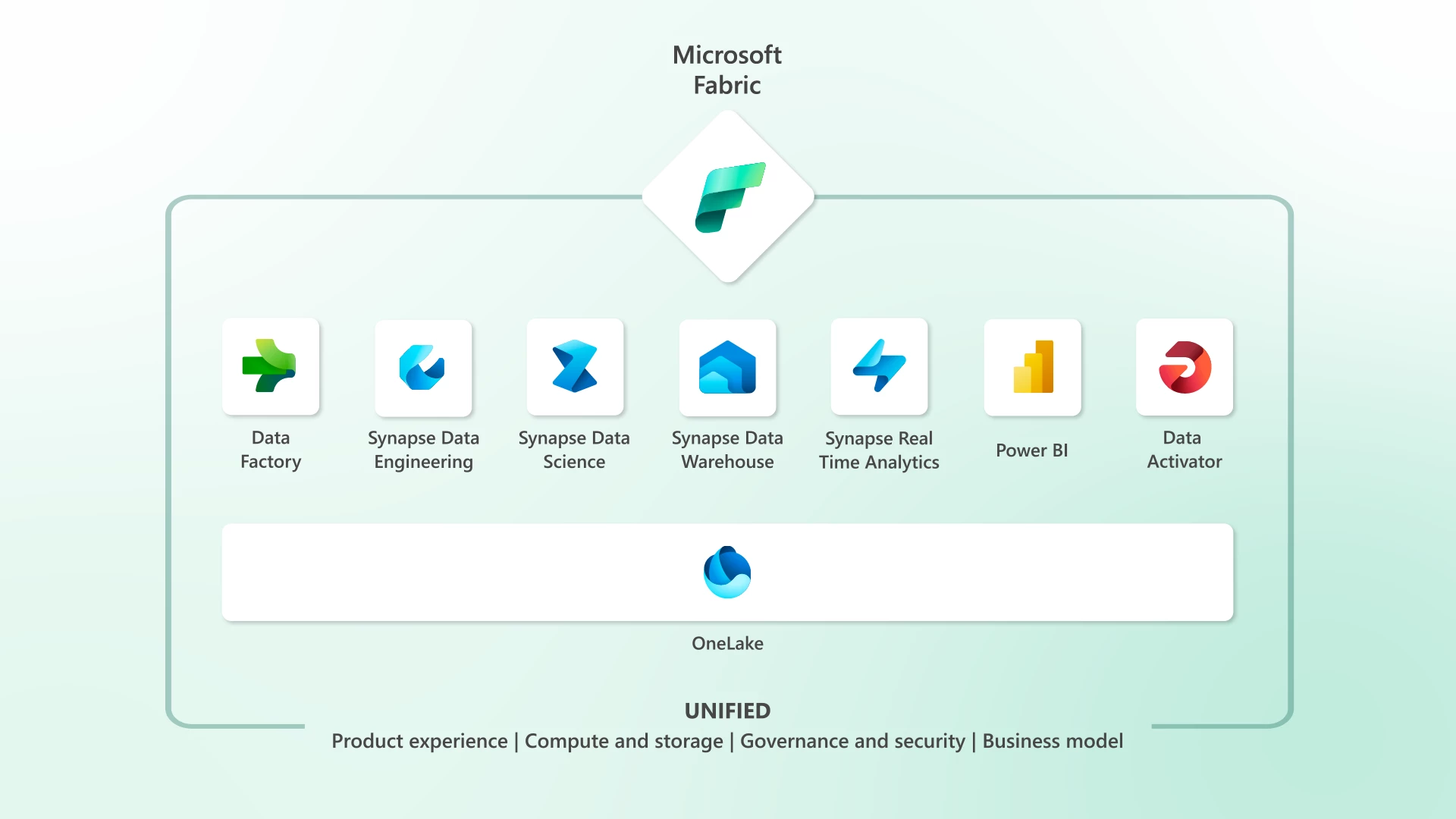
Microsoft Fabric
Introducing Microsoft Fabric:
In today’s data-driven world, the ability to effectively manage and analyze data is crucial for any organization. Microsoft Fabric emerges as a comprehensive solution, offering an end-to-end analytics platform designed to cater to both data professionals and business users.
What is Microsoft Fabric? Microsoft Fabric is an integrated analytics platform that streamlines the data journey from ingestion to analysis. It offers a single environment where data professionals and business teams can collaborate seamlessly on various data projects.
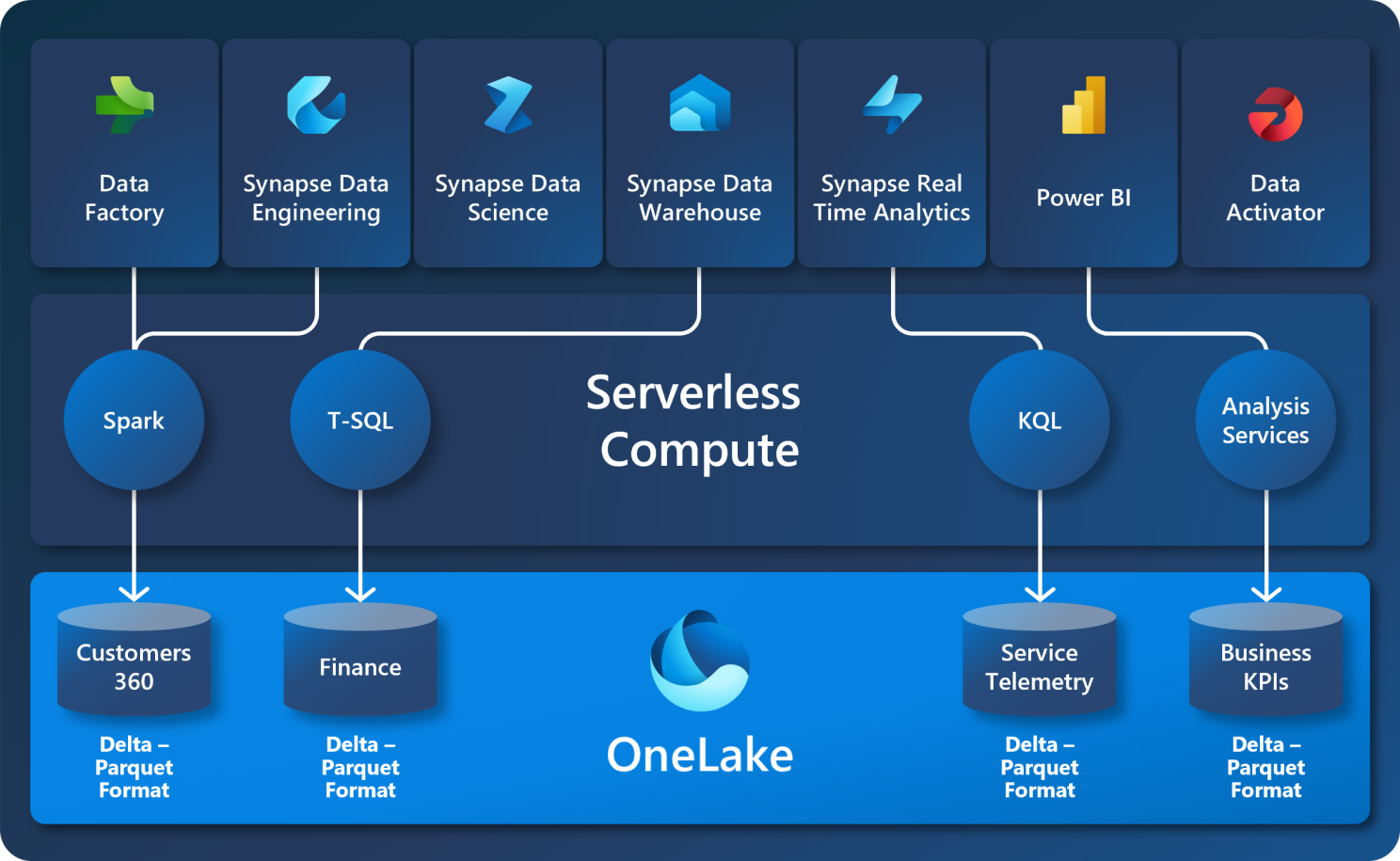
Key Services of Microsoft Fabric:**
- Data Engineering: Enables the structuring and processing of large data sets.
- Data Integration: Simplifies the merging of data from multiple sources.
- Data Warehousing: Provides a centralized repository for organized data storage.
- Real-time Analytics: Allows for the analysis of data as it is being generated.
- Data Science: Supports advanced data analysis and machine learning models.
- Business Intelligence:: Facilitates data visualization and informed decision-making.
Key Features of Microsoft Fabric:**
- Unified Software-as-a-Service (SaaS) Offering: Fabric integrates multiple analytics services into a single, user-friendly interface. It eliminates the need for juggling different tools, offering a streamlined experience.
- OneLake: The Core of Fabric: At the heart of Microsoft Fabric is OneLake, a revolutionary lake-centric architecture. It functions like a ‘OneDrive for data’, centralizing storage across regions and clouds without data duplication. OneLake ensures that all compute workloads in Fabric are effortlessly synchronized with this central data store. The default storage format for OneLake is Delta Parquet, an open-source storage layer that brings reliability to data lakes.
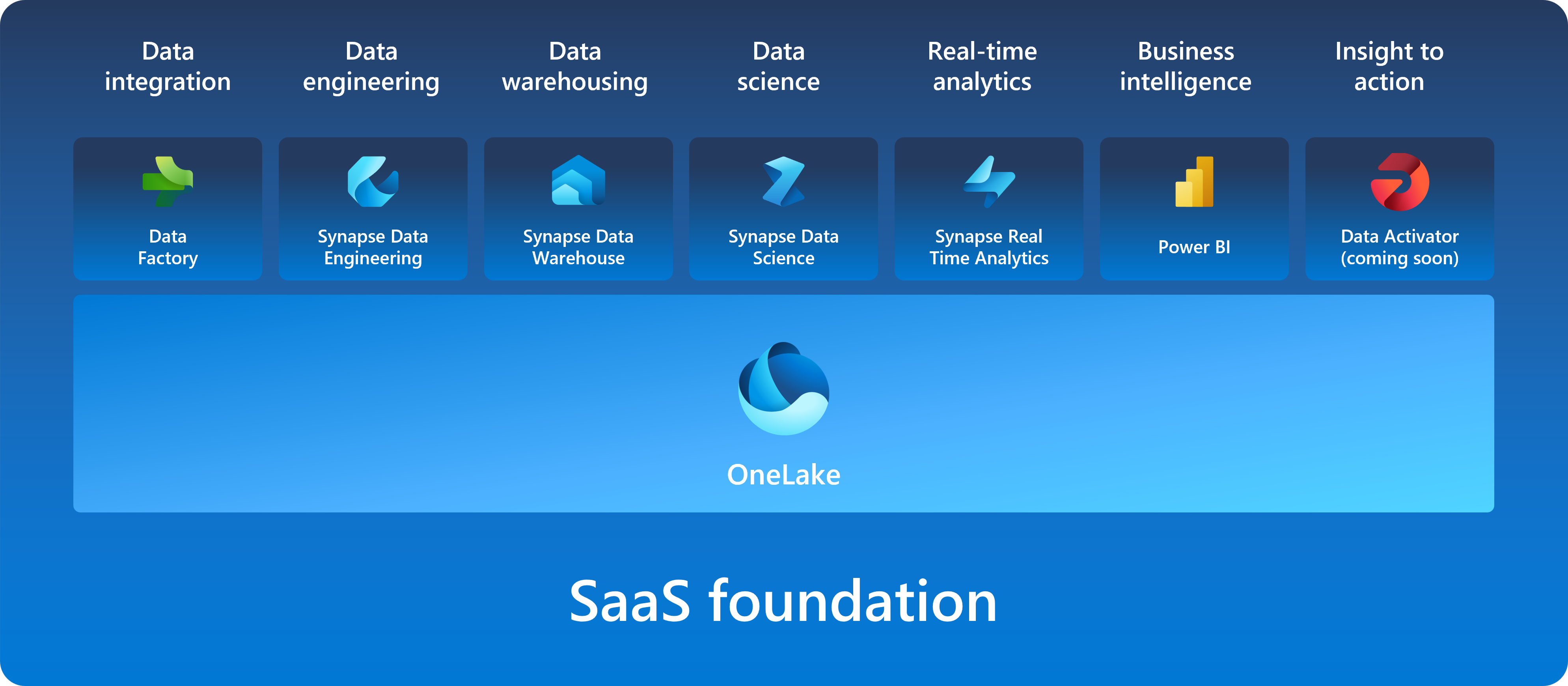
- OneCopy Component: A pivotal feature of OneLake, OneCopy allows data access from a single source, eliminating the need for moving or duplicating data. This ensures efficiency and consistency across various analytics processes.
- Seamless Integration with Azure Data Lake Storage (ADLS): OneLake is built on ADLS, supporting diverse data formats like Delta, Parquet, CSV, JSON, and more. This flexibility ensures that Fabric can handle a wide range of data types effectively.
- Shortcut Creation: OneLake enables the creation of shortcuts, or embedded references, to other files or storage locations. This feature facilitates quick data sourcing and synchronization across various cloud data sources.
- Diverse Analytics Experiences: Fabric offers tailored analytics experiences for different needs, including data engineering, warehousing, science, real-time analytics, data integration, and business intelligence through tools like Synapse Data Engineering, Synapse Data Warehouse, and Power BI.
- Security and Governance: Centralized governance in OneLake ensures data security and accessibility. Fabric’s integration with Microsoft Purview Information Protection provides an extra layer of data classification and protection.
The Benefits of Using Microsoft Fabric:**
- Simplicity: Offers an integrated, easy-to-understand interface.
- Scalability: Capable of handling growing data needs.
- Cost-Effectiveness: Reduces the need for multiple analytics tools.
- Accessibility: Can be accessed anywhere with an internet connection.
- Continuous Updates: Regular updates and maintenance by Microsoft.
Data Collaboration and Accessing with Microsoft Fabric:
Microsoft Fabric is a game-changing tool for data professionals, simplifying collaboration on data projects. It combines data engineering and analysis in one platform, reducing the need for separate systems and easing communication. Data analysts can now easily transform data, and data engineers can better curate data models. The platform also allows for direct data access and simplifies creating reports with Power BI. Fabric’s SaaS nature enables quick setup and flexible scaling to meet business demands. Additionally, its low-to-no-code approach makes it accessible to more users, bridging the gap between complex data tasks and user-friendly solutions. In short, Fabric is a comprehensive, efficient tool for modern data management and analysis.
How to Access Microsoft Fabric:
Microsoft Fabric is an innovative platform that integrates various Microsoft data offerings into a single, user-friendly experience. To utilize its full potential, it’s essential for organizations to enable Fabric. Here’s a simplified guide on how to get started:
Eligibility and Roles: To enable Fabric, you need to be a Fabric admin, Power Platform admin, or Microsoft 365 admin. This is a change from June 2023, where the Fabric admin role was introduced, replacing the Power BI administrator role.
Licensing: A trial license is necessary to use Fabric. You can find more information on how to acquire this on the Microsoft website.
Checking Access: To see if you have access to Fabric, sign into Power BI and look for the Power BI icon at the bottom of the left navigation pane. Its presence indicates access to Fabric.
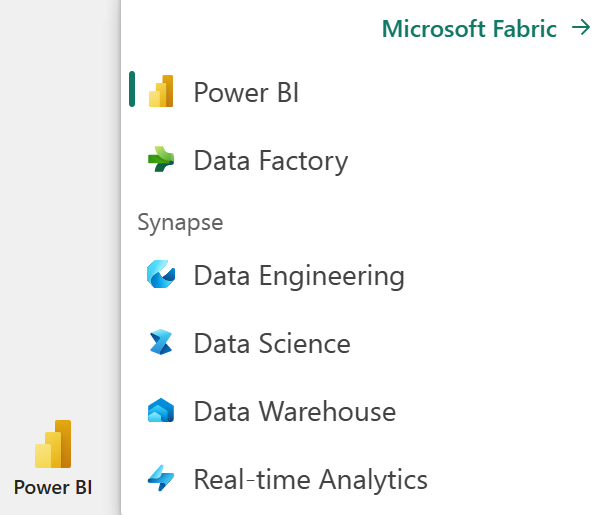
Enabling Fabric: If you’re an admin, go to the Admin center in Power BI. From there, you can enable Fabric in the Tenant settings. It can be activated for the entire organization or specific user groups, based on Microsoft 365 or Microsoft Entra security groups.
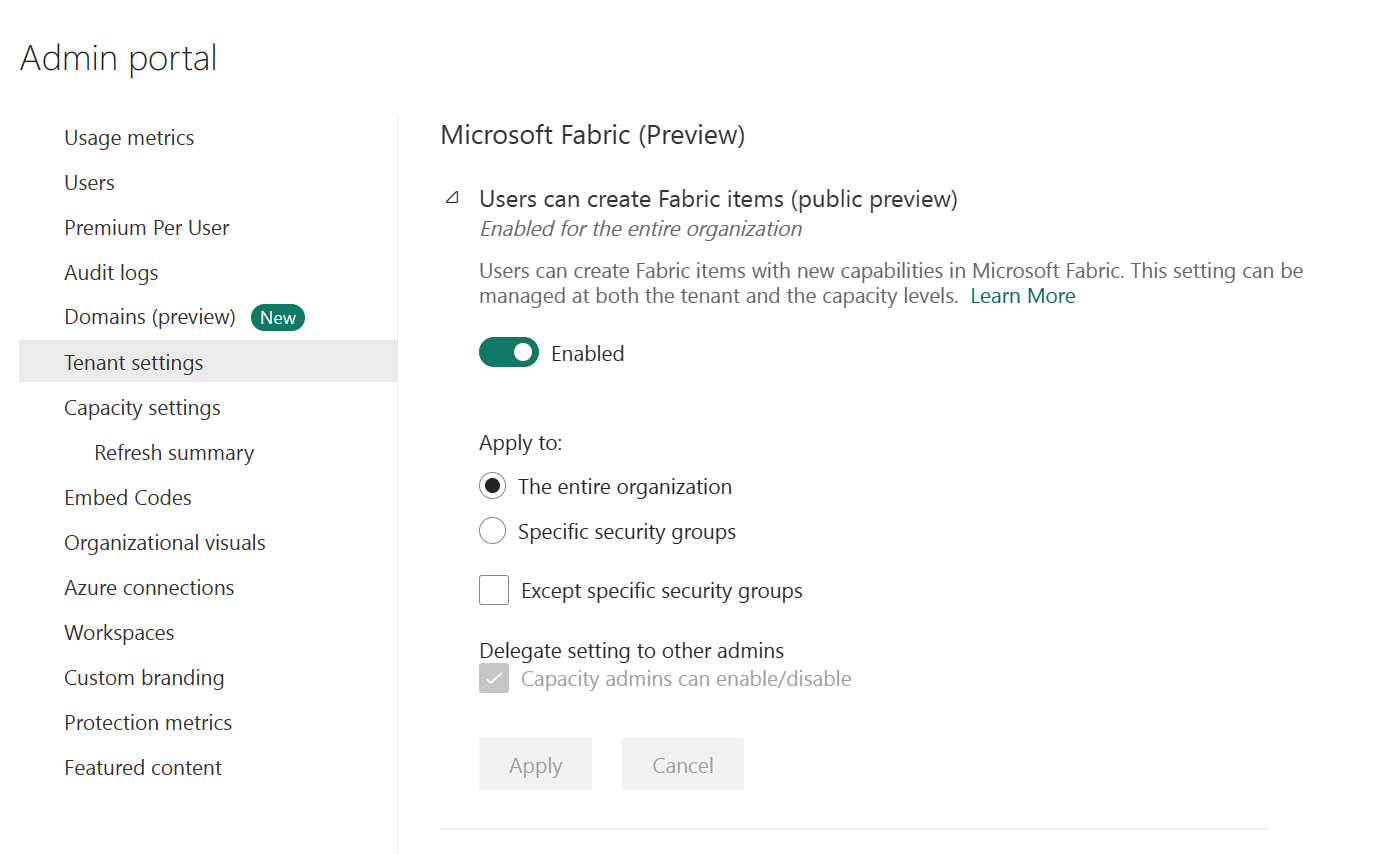
Creating Fabric-Enabled Workspaces: Fabric items are stored in OneLake and are accessed via Fabric workspaces. These workspaces must be in Premium capacity. If you don’t have access to this, you can opt for a trial in the Premium capacity settings.
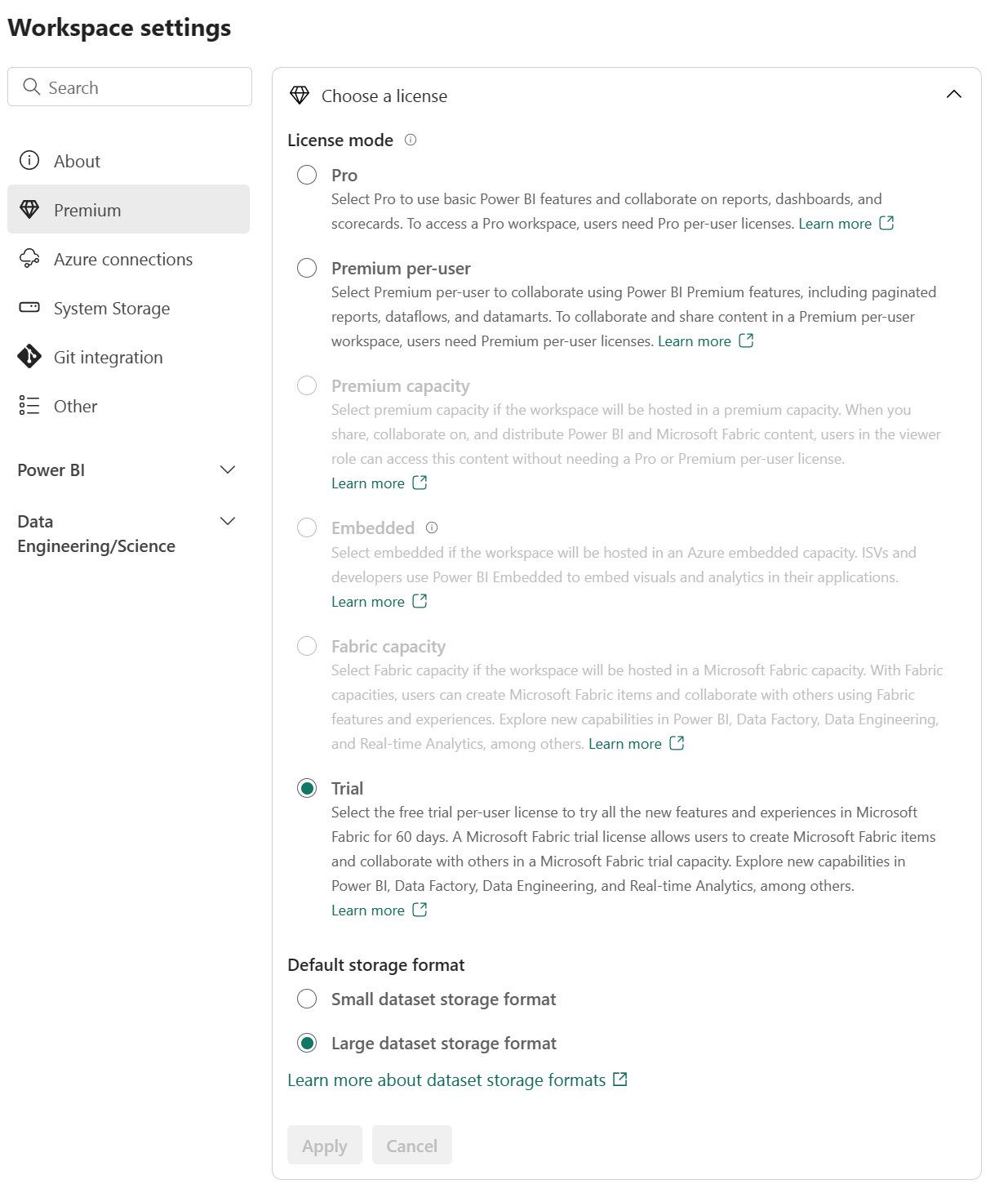
Creating Resources in Fabric: Once your workspace is set up, you can begin creating resources in Fabric using the Create menu in Power BI.
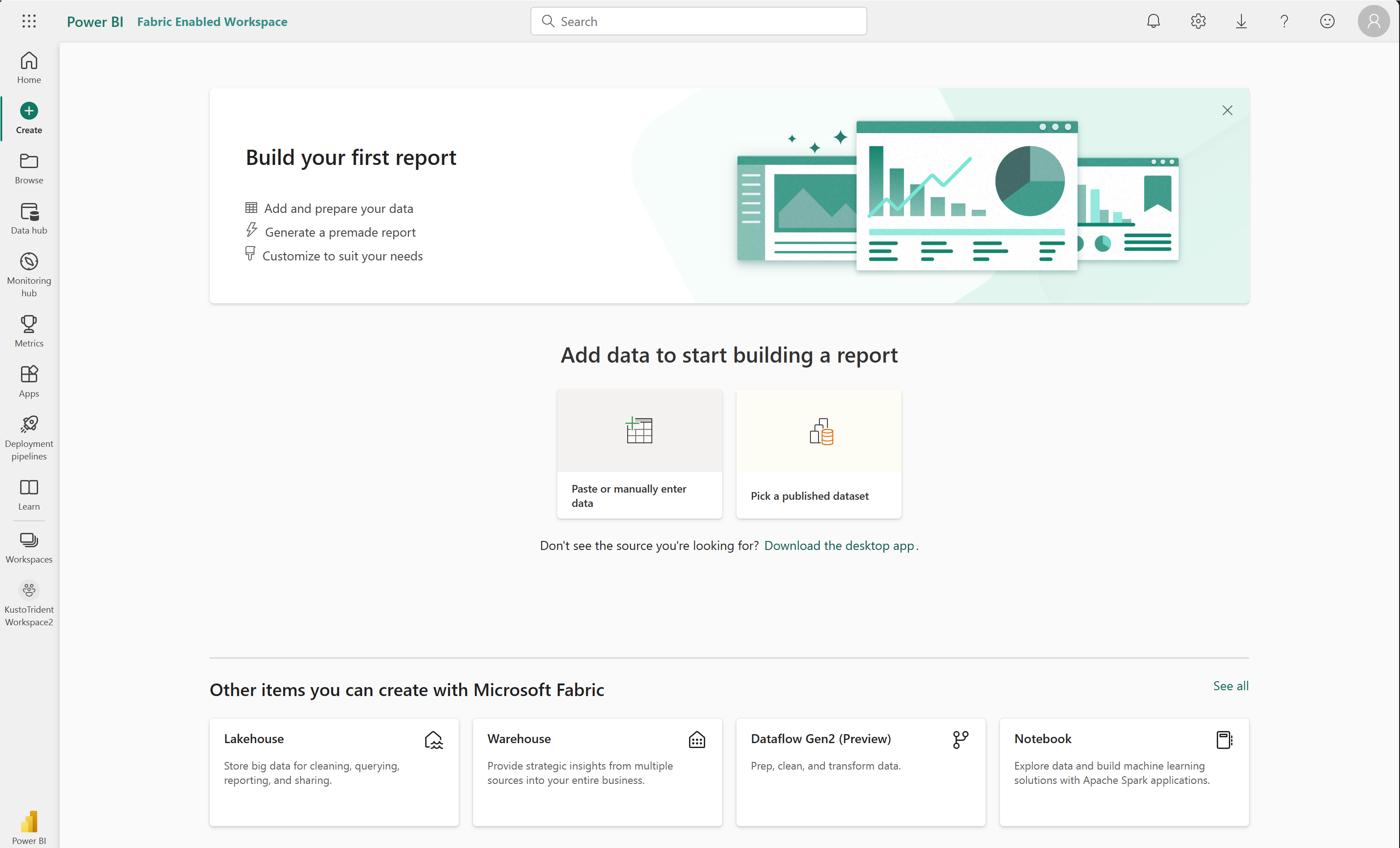
Fabric Experiences: Fabric offers various capabilities, including Data engineering, Data factory, Data science, and more. It’s built on Power BI and Azure Data Lake Storage, incorporating features from Azure Synapse Analytics, Azure Data Factory, Azure Databricks, and Azure Machine Learning.
